Something special was cooking in the first quarter, courtesy of the one only Chef in the NBA.
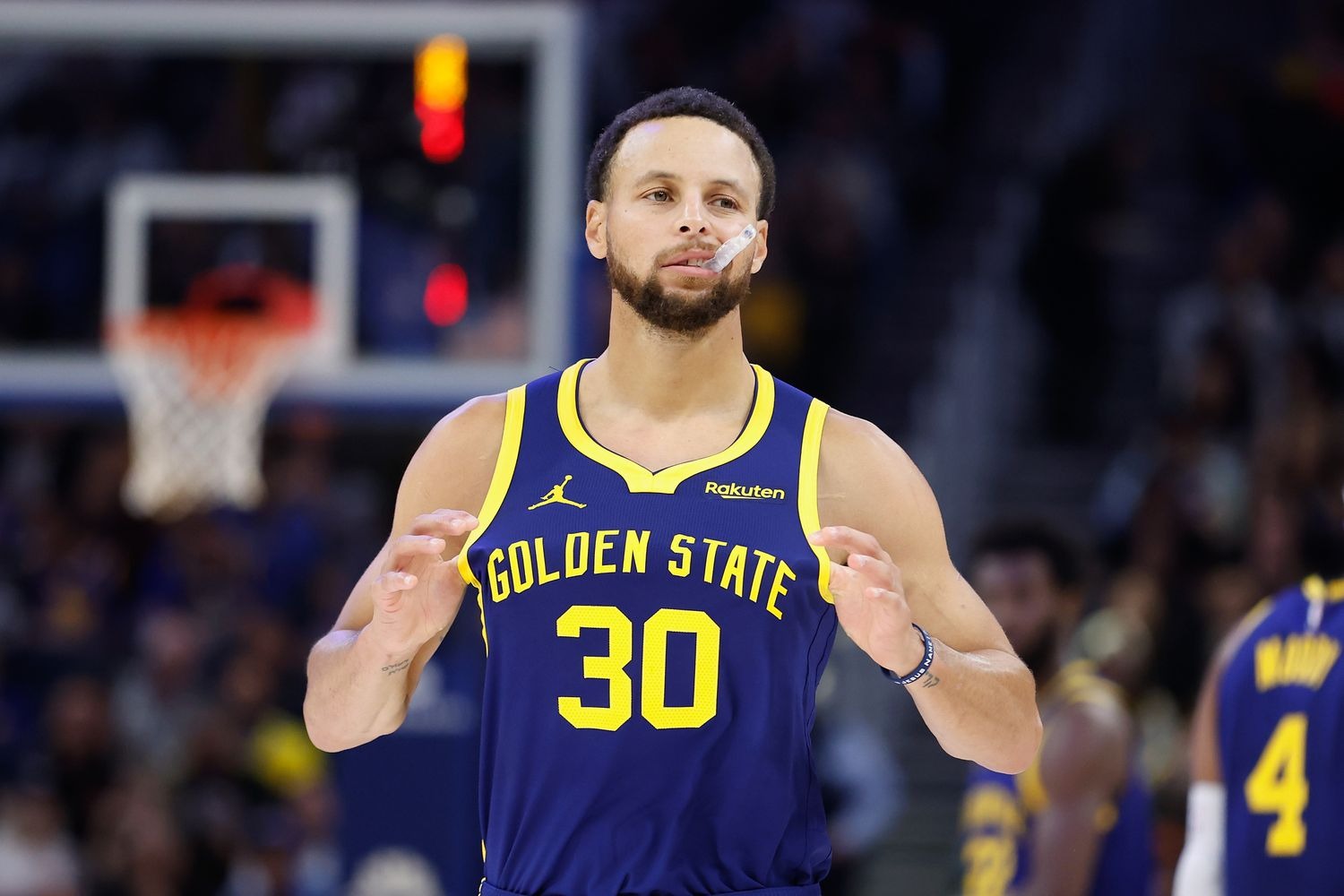
Granted, this was against a team notorious for its defensive struggles. With garbage time eliminated, the Indiana Pacers have been allowing 120.5 points per 100 possessions from opponents (26th), 102.1 points per 100 possessions in the half court (24th), and 136.0 points per 100 possessions in transition (28th), per Cleaning The Glass. If there was any team that was prone to being served up on a silver platter for a Steph Curry explosion, it was the Pacers.
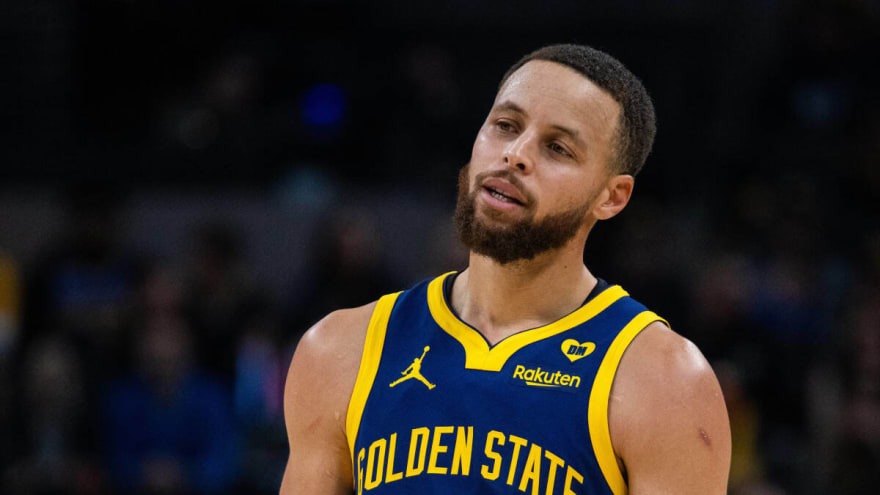
Yet despite the aforementioned context, a Curry flurry never ceases to amaze — especially from a soon-to-be 36-year-old who still has what it takes to set the basketball world ablaze. He definitely set the Pacers’ defense ablaze tonight by drilling his first seven attempts from three-point range, on his way to a 29-point first half on an incredible 126.9% True Shooting.
That pace was always going to be impossible to maintain. As expected, Curry’s production dropped off in the second half, but the final numbers are still a sight to behold: 42 points on 15-of-22 shooting (4-of-6 on twos, 11-of-16 on threes). His out-of-this-world True Shooting percentage after the first half predictably cratered — to a still-stratospheric 91.8%.
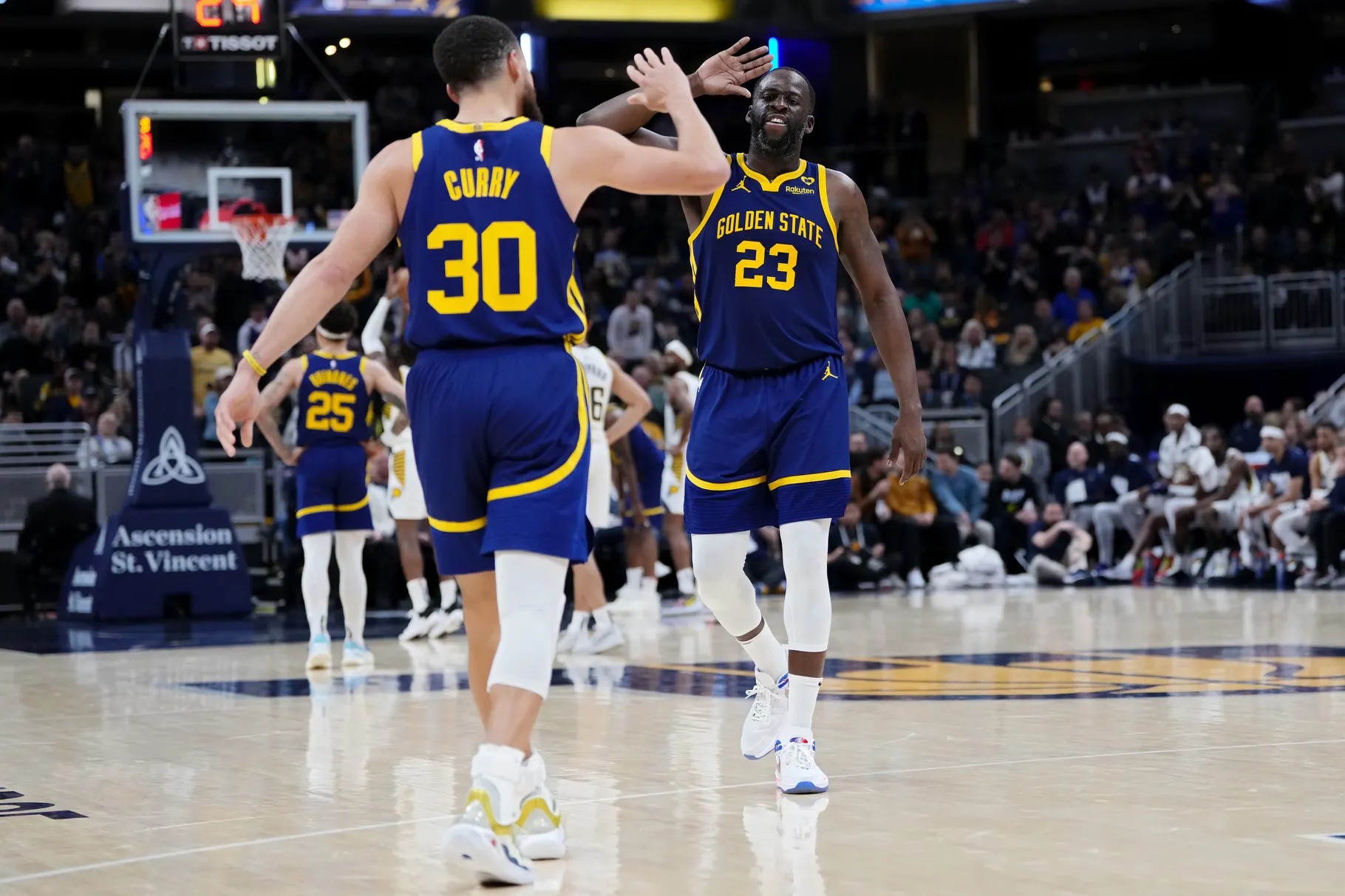
Even though my schtick as a writer is focusing on the nuances and the little details that may fly above most people’s heads — and trying my best to break it down into digestible nuggets for everyone to consume and understand — I find myself oooh-ing and ahhh-ing like every fan at all the marvelous occurrences that accompany the all-time greats in this league. I’ve seen this kind of shot from Curry so many times throughout his career, but I still shake my head in wondrous awe every time it happens:
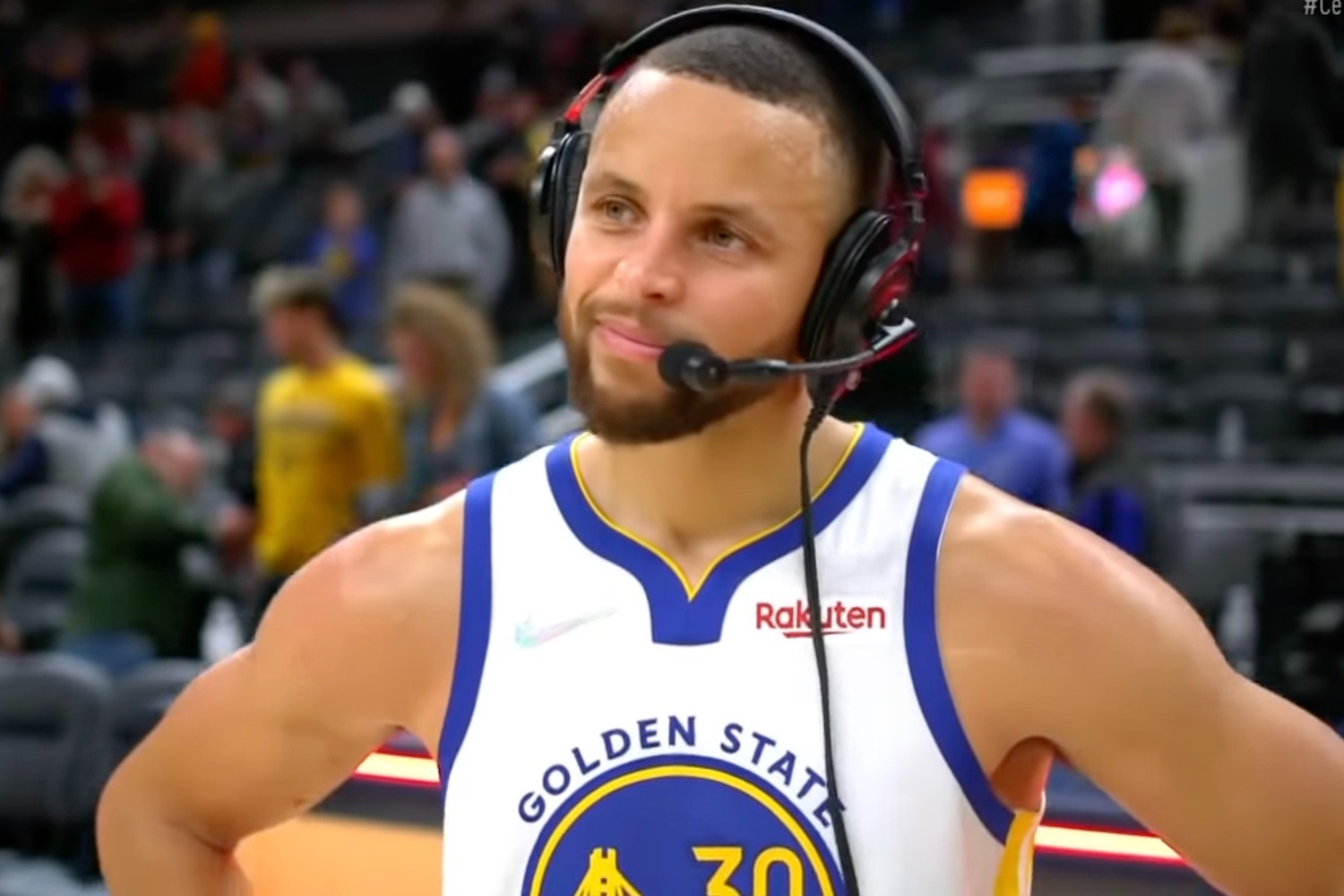
Also, when this happens — despite the double team he faced from nearly 30 feet out:
The brilliance of Curry from long distance can be summarized by many records: his 3,615 career threes that is slowly leaving everyone else behind in the dust; the number of times he has made at least eight threes in a game and how it dwarfs the next three players on the list — even if you combine their numbers:
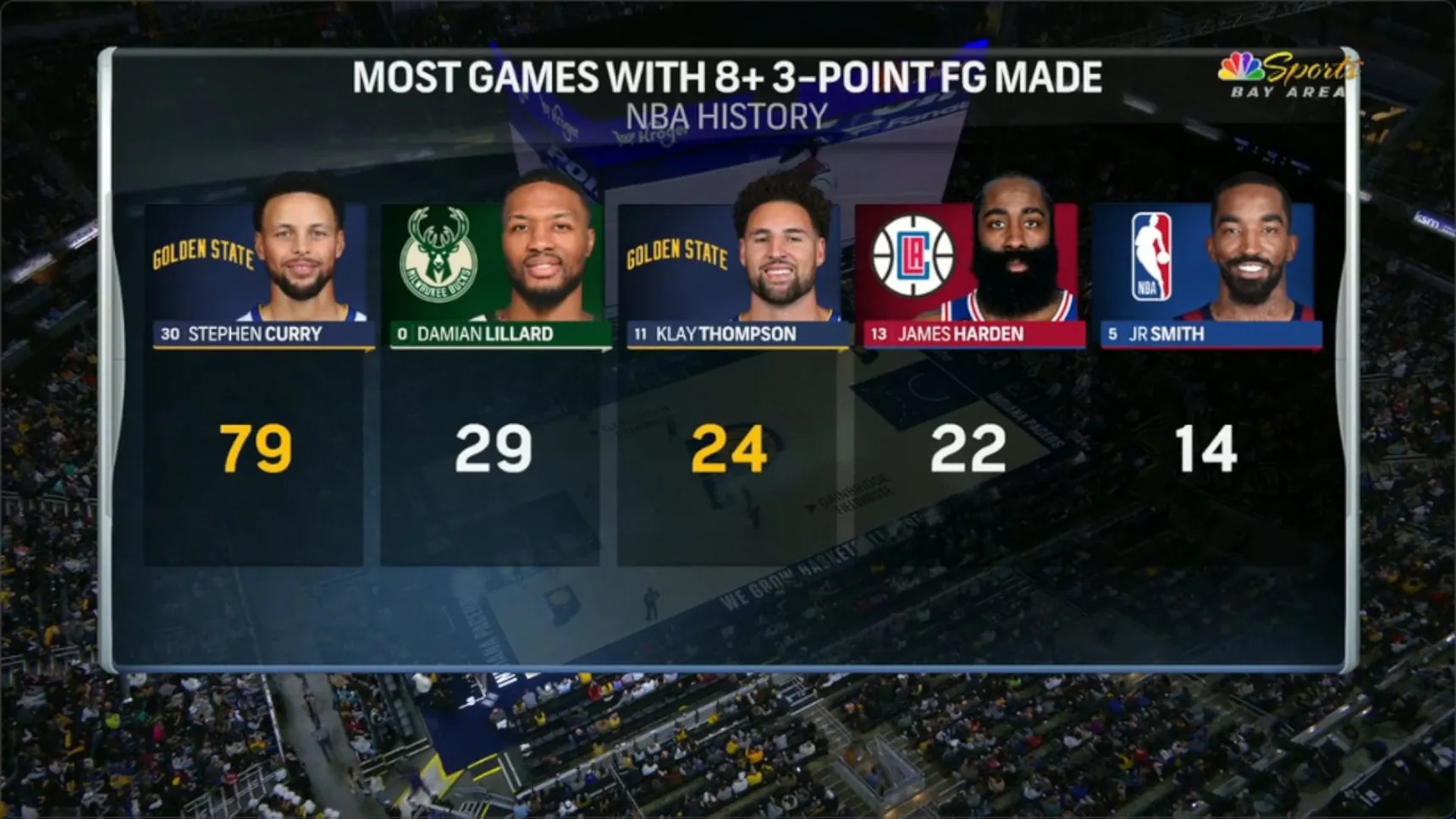
The number of times he’s made at least nine threes — and how it dwarfs the next four people on the list combined:
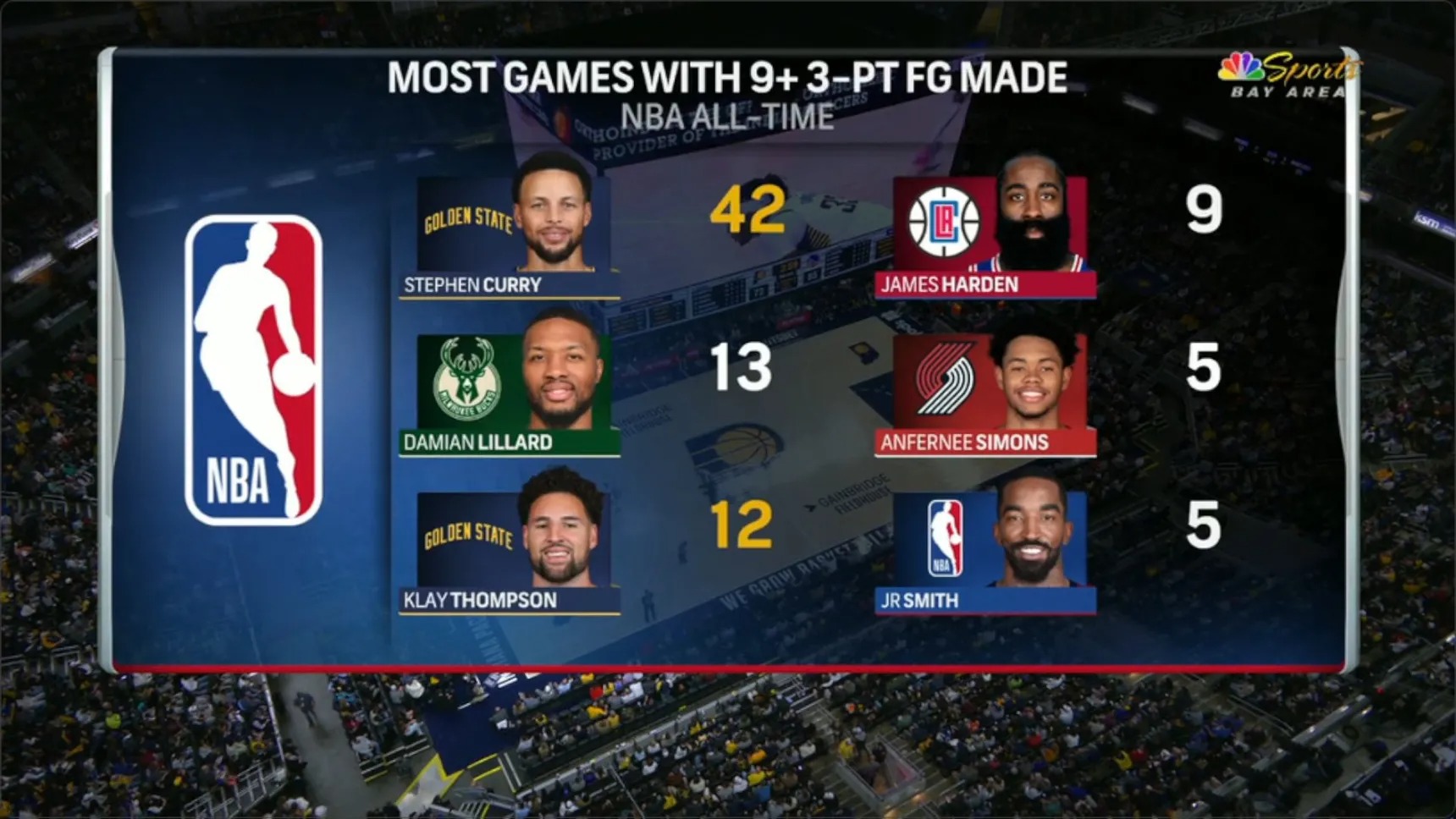
And the number of times he’s made at least 11 threes — and how it dwarfs everyone else on the list combined:
